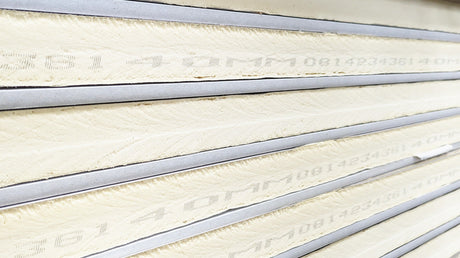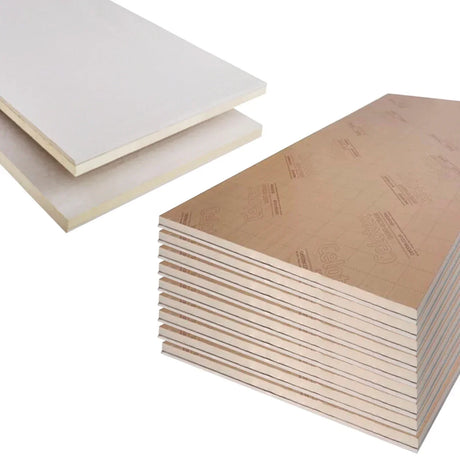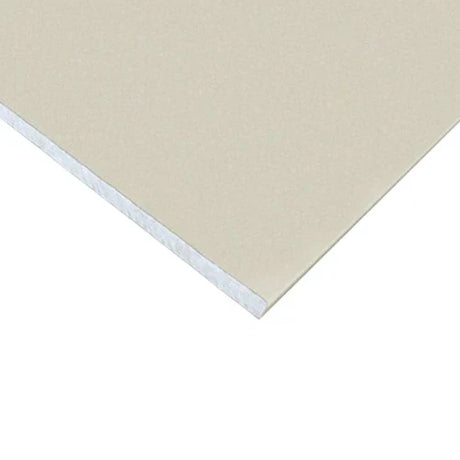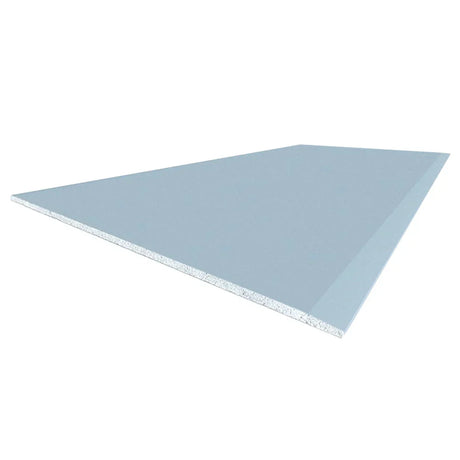The effectiveness of fire resistant plasterboard derives from sophisticated material science and engineering that transforms a simple building material into a highly effective fire protection system. Understanding the mechanisms behind this performance helps appreciate why correct specification and installation are so critical.
Fundamental Protection Mechanisms
Fire resistant plasterboard functions through several complementary protection mechanisms:
Controlled Water Release: The most fundamental protection mechanism involves gypsum's natural properties:
- Gypsum (calcium sulphate dihydrate - CaSO₄·2H₂O) contains approximately 21% chemically bound water
- When exposed to fire, this water converts to steam in an endothermic reaction
- This reaction absorbs significant heat energy (approximately 2260 kJ/kg)
- The board's core temperature remains around 100°C until this process completes
- This temperature stabilisation protects structures behind the board
This natural process provides the foundation for all plasterboard's fire resistance, with specialised fire-rated boards optimising this mechanism.
Phase Change Barriers: The controlled water release creates multiple protection zones within the board:
- A fully dehydrated outer zone (calcium sulphate anhydrite)
- An active calcination zone where water is actively being converted to steam
- An intact inner core still at relatively low temperature
- These progressive zones create a temperature gradient across the board thickness
This natural zoning effect maximises the protective value of even relatively thin board layers.
Shrinkage Resistance: Preventing cracking and maintaining barrier integrity:
- Glass fibre reinforcement throughout fire-rated boards maintains cohesion after calcination
- The controlled core formulation minimises shrinkage stresses during heating
- Multiple layers with staggered joints prevent continuous crack propagation
- Paper facings are designed to maintain integrity as long as possible despite eventual combustion
These features ensure the board maintains its protective function even as its composition changes during fire exposure.
Thermal Insulation Characteristics: The physical structure creates excellent thermal insulation:
- Calcined gypsum has naturally low thermal conductivity (approximately 0.2 W/mK)
- The porous microstructure after water release provides further insulation benefits
- Multiple air/solid interfaces in multi-layer systems enhance insulation performance
- This insulation capability limits temperature rise on the non-fire side
These insulation properties directly contribute to satisfying the temperature rise criteria in fire resistance testing.
Material Composition Engineering
The enhanced performance of fire resistant plasterboard stems from specific material formulation:
Core Formulation Optimisation: Specialised additives enhance natural gypsum properties:
- Vermiculite and similar expandable minerals add structural reinforcement during fire
- Glass fibre reinforcement (typically 2-5% by weight) maintains cohesion after calcination
- Specific mineral additives modify crystallisation behaviour during manufacture
- Carefully controlled density provides optimal balance between protection and practicality
These modifications transform basic gypsum board into engineered fire protection with predictable performance.
Controlled Density Profiles: The manufacturing process creates specific density patterns:
- Higher overall density than standard board (typically 800-1000kg/m³ vs 600-700kg/m³)
- Some products feature density gradients through board thickness
- Edge density might differ from core density for enhanced fixing strength
- These density variations optimise performance while maintaining workability
The precise density control represents a key manufacturing distinction between standard and fire-resistant products.
Facing Materials Development: The outer paper or mat facings play crucial roles:
- Paper facings in standard fire-resistant board include fire-retardant treatments
- These treatments control paper combustion behaviour and minimise flame spread
- High-performance fireboards replace paper with non-combustible glass fibre mats
- Facing materials are engineered for both fire performance and manufacturing compatibility
The facing materials significantly influence both early fire performance and long-term integrity during extended exposure.
Edge Profile Engineering Board edges receive specific attention:
- Tapered edges allow effective jointing without reducing core thickness at joints
- Square edge variants provide maximum protection thickness throughout
- Some specialised products feature engineered edge profiles that enhance joint performance
- Edge treatment during manufacture ensures consistent density at these vulnerable points
These edge details directly influence system integrity during fire conditions.
System-Level Performance Enhancement
Beyond individual board characteristics, complete systems enhance protection through additional mechanisms:
Cavity Barrier Effects: The space within framed systems contributes to performance:
- Mineral wool within cavities provides additional heat absorption capacity
- The insulation limits convection currents that could transfer heat
- Specific cavity barrier arrangements prevent fire spread within the void
- The contained air space provides additional thermal buffering
These cavity characteristics significantly enhance system performance beyond board properties alone.
Multi-Layer Synergistic Effects: Multiple board layers provide more than additive protection:
- Staggered joints eliminate continuous vulnerable paths
- Different phases of calcination in successive layers create enhanced protection zones
- Junction details between layers absorb additional energy
- The sequential failure mechanism prolongs overall system integrity
These synergistic effects explain why multiple thin layers typically outperform single thick layers of equivalent total thickness.
Junction Sealing Mechanisms: The interfaces between boards and with other elements receive specific treatment:
- Fire-rated joint compounds provide controlled cracking resistance during fire exposure
- Perimeter fire-stopping creates flexible barriers accommodating thermal movement
- Specialised sealants expand during fire to fill gaps created by material shrinkage
- These treatments maintain system integrity at naturally vulnerable points
The effectiveness of these junction treatments often determines overall system performance.
Time-Based Protection Strategy
Fire resistant plasterboard systems implement a time-based protection strategy aligned with building safety objectives:
Evacuation Time Window: Primary protection focuses on occupant evacuation:
- Standard domestic requirements (30 minutes) align with expected evacuation timing
- Enhanced protection for complex or larger buildings reflects longer evacuation requirements
- Protected escape routes receive specific attention to maintain usability during fire
- This time-based approach prioritises life safety above property protection
The specified fire resistance periods directly relate to expected evacuation scenarios for different building types.
Fire Service Intervention Window: Secondary protection supports fire fighting operations:
- Commercial building requirements (60-120 minutes) consider fire service response and intervention
- Compartmentation maintains tenable conditions for firefighting operations
- Structural protection prevents premature collapse that could endanger fire personnel
- This extended protection facilitates property protection as a secondary benefit
These extended ratings recognise both life safety and property protection objectives.
Progressive System Response: The protection systems respond dynamically as fire develops:
- Initial protection from intact board system
- Secondary protection phase as calcination progresses
- Tertiary protection from fully calcined board maintained by reinforcement
- Final sacrificial protection as the system gradually degrades
This staged response maximises protection duration from relatively thin, practical building elements.
Performance Predictability: The engineered nature of modern systems provides reliable performance:
- Extensive testing validates performance under standardised conditions
- Quality control during manufacture ensures consistent product characteristics
- Installation standards maintain as-built performance consistency
- This predictability allows appropriate reliance on these systems in safety-critical applications
The scientific understanding of protection mechanisms supports confidence in these engineered systems.
At DIY Building Supplies, we supply fire resistant plasterboard from leading UK manufacturers who invest extensively in research, development and testing to ensure their products deliver reliable, predictable fire protection performance when correctly specified and installed.









